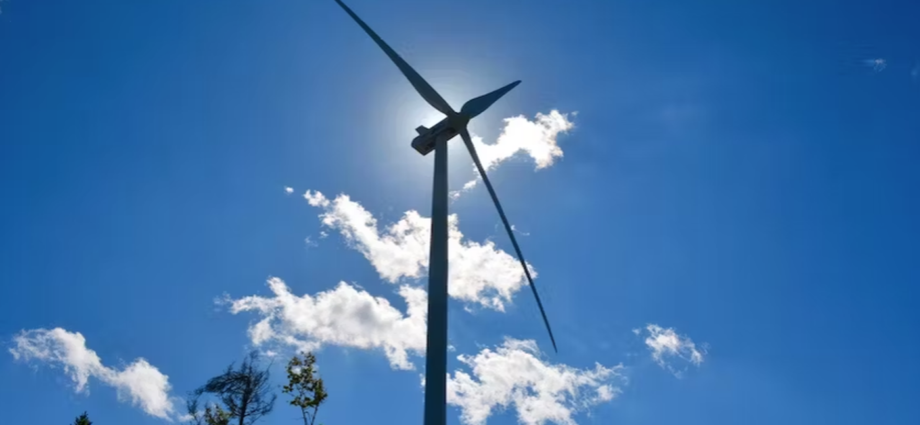
By Peter Jackson, Local Journalism Initiative Reporter, The Telegram
August 27, 2023
World Energy GH2 dropped its hefty two-volume environmental impact statement (EIS) this week, a pivotal part of the process towards gaining final government approval of Project Nujio’qonik.
The ambitious wind farm and hydrogen plant proposed for the Port au Port Peninsula and Codroy Valley on Newfoundland’s west coast has garnered widespread attention as an unprecedented dive into the frontier industry of green hydrogen, and has caused a local rift between those who welcome the economic potential and those who fear it will be an enormous mistake.
Here are a few takeaways.
ENGAGEMENT
• The company cites 75 instances of engagement with stakeholders since the project was first proposed, but only a handful of these were public meetings. Engagement included face-to-face meetings with individual and group stakeholders, as well as phone or video calls and emails. Mailouts were also included.
• Twenty hours of open-house sessions in various locations were conducted in April 2023.
BIRDS
• “The project will result in a direct loss of habitat for avifauna, including (species at risk), through vegetation clearing for access roads, turbines, transmission lines and other project components.”
• “A post-construction wildlife mortality monitoring program will be established, and carcass searches will be conducted at the turbines between April and October. Surveys will be designed to account for searcher efficiency and scavenger rates. The mortality monitoring program will be developed in consultation with the Government of NL Wildlife Division and the (Canadian Wildlife Service).
BATS
• “Bats were chosen as a (valued ecosystem component) because they are an ecologically important group of species, and are known to be adversely affected by wind farms. Wind turbines are known to cause bat fatalities through collisions and barotrauma. Barotrauma occurs when bats experience a sudden drop in air pressure when they get close to the rotating turbine blades. This causes internal hemorrhaging as the air in the lungs and other internal tissues expands rapidly, resulting in death “
WATER
• “Due to the distance and remote nature of the Codroy Wind Farm, a separate workforce accommodations camp may be required to house workers during construction of the Codroy wind farm. It is anticipated that this camp would house up to approximately 500 workers, with a corresponding water demand of approximately 139 L/min, which may be provided by a new potable water supply well(s).”
• Water for the project itself — mainly that used for the hydrogen plant — will be sourced from the existing industrial water supply near the Port of Stephenville. It will require approximately 75 per cent of the water that was used by the paper mill which formerly occupied the area where the hydrogen plant will be located.
WASTE
• As well as the usual issues of industrial waste disposal, the project will have to deal with septic waste from work camps. “Potential effects to groundwater quality from discharge of groundwater from construction dewatering and the release of treated waste from septic systems are mitigated through a variety of provincial and federal standards and codes of practice. Residual effects will be localized to setback distances defined in these regulations.”
VEGETATION
• “Project-related changes may threaten the long-term persistence or viability of a vegetation species in the regional assessment area (RAA), including resulting in effects that are contrary to, or inconsistent with, the goals, objectives, or activities of provincial or federal recovery strategies, action plans and management plans. To help manage the potential significant effects on plant species at risk and species of conservation concern, a species at risk impact mitigation and monitoring plan will be prepared and submitted to the NL Department of Fisheries, Forestry and Agriculture – Wildlife Division.”
NOISE
• “The worst-case conditions for wind turbine noise are often when winds are moderate (i.e., approximately 6 m/s) but are still low enough that background noise levels are low. Therefore, the sound power levels for the wind turbines operating in winds of 6 m/s were used.”
• For Port au Port, “sound levels are predicted to increase, however sound levels are not predicted to increase beyond guideline criteria for nuisance of sleep disturbance.”
ACCIDENTS
Measures being taken to avoid accidents include:
• Ammonia/hydrogen leaks: storage tanks will be double-walled, have berms around them, and include “robust” detection and warning systems.
• Turbine collapse or blade dislodgement: the optimal foundation style for the turbines through geotechnical analysis; weather forecasts will be regularly monitored and appropriate preventative measures taken in advance of adverse conditions; turbines will be sufficiently set back from residences to mitigate risks.
Subscribe to our newsletter.

